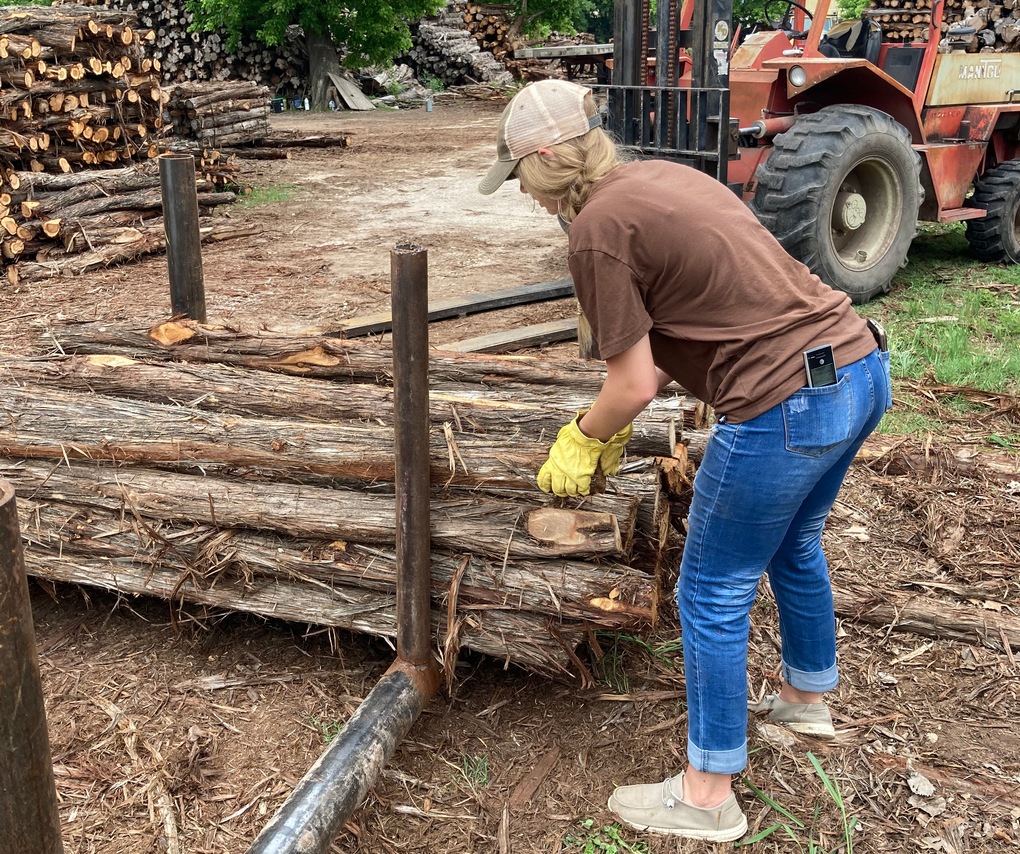WHAT IS MOUNTAIN CEDAR, ANYWAY?
Well, technically, it is Ashe juniper (Juniperus ashei). The name "mountain cedar" comes from its visual similarity to Eastern Red Cedar and its preponderance in the Hill Country, or Edwards Plateau ecoregion, of Texas. It is commonly a bushy shrub 8-12' in height, but, where soil permits, and especially in the understory of large hardwoods, it will grow straight and tall to capture sunlight, reaching heights of 30' or more. Ashe juniper will form dense monocultures when left unchecked, choking out other plants, decreasing range productivity, and diminishing water resources. Although categorized as a soft wood, mountain cedar is renowned for its longevity and durability outdoors. This is due to its "heart", or redish-brown center, which contains high concentrations of cedrol and other sesquiterpenes known for their anti-fungal properties.
The heart is surrounded by an outer ring of white sapwood, which will rot away over time. The faster the tree grows, the more "whitewood" will be present, decreasing the life of the post. This is why much of the cedar harvested in the deeper soils north and east of the Hill Country, in the Central Mineral and Grand Prairie regions, will only last 8-10 years outdoors. True mountain cedar only grows in the rocky soils present within a 50-mile radius of Kerrville, TX. Because the trees are slow-growing, it is not uncommon for the posts to last 50 years or more, as evident by many of the historic fences still standing along roadsides scattered throughout Kerr County.

UNDERSTANDING POST SIZING AND GRADING
Unlike lumber, the first number in the dimensions is the minimum length of the post in feet, but is not an exact measurement and will vary by several inches. The second number is the diameter of the post on the smallest end. Because posts are not completely round, the diameter is determined by measuring the circumference and dividing by 3 (basically, d=c/π). So, for example, a 7'-long post with a circumference of 12” on the small end, would be a 7’x4”. Posts are then graded by straightness into two categories: #2, traditionally called “wire posts”, used for stretching miles of wire in the pasture as they are more economical and typically contain more heart, and #1, called "yard posts", selected for their straightness as you would use around your yard.
A WORD ABOUT OUR GRADE
We have a very strict grade. We often hear from customers that our #2’s are comparable to #1’s they purchased elsewhere for two reason: First, other vendors use more of an approximation of diameter, so the customer may price 7’x5” posts, but what they receive are a mixture of 4” and 5”. Secondly, due to smaller inventory, they have to allow posts with less than a 2" bow into their #1's to meet demand. If you want truly straight posts, you often have to pay an up charge for “hand picked” or “select”. Therefore, our price quote will often be higher than our competitors, but we don't claim to be the cheapest--- just the best.